Summary
- In 2023, major jurisdictions like the UK, EU, UAE, Japan, Hong Kong, and Singapore raced to establish themselves as crypto hubs by developing credible regulatory frameworks.
- The Asia-Pacific region witnessed a significant shift in institutional adoption and regulatory development for digital assets this year, with notable projects and pilots, guidelines for centralized exchanges, and stablecoin licensing regimes in Japan and Singapore.
- The EU this year passed the landmark MiCA legislation and the UK took its first proper step towards a regulatory regime.
- Meanwhile, the U.S. laid critical foundations for crypto legislation, and individual states pursued individual regulatory solutions.
- Want more 2023 reviews? Check out the Stories You May Have Missed and Articles for Beginners, Policy Wonks, and Technologists.
As 2023 draws to a close, the Crypto Council for Innovation team takes a reflective look at the year, and the significant policy events that shaped the crypto space. Overall, we can safely say, this year has proved again that there is never a dull moment in crypto. Here’s what they had to say.
The global “race to the top” heats up – Ji Kim
In 2023, we saw a race to the top among jurisdictions competing to become hubs for digital assets and the financial system of the future. In the UK, EU, UAE, Japan, Hong Kong, andSingapore, for example, there is ongoing progress and competition to have credible regulatory frameworks that attract commercial growth and innovation.
For example, in the EU, we’re now waiting for the technical rules from the EU supervisory authorities to understand the full impact of implementing MiCA across the 27 member states. The UK is taking a modular but strategic approach to digital assets policy. And more broadly across Asia Pacific, we’re seeing the development and implementation of various licensing regimes. There is a clear recognition by governments across the world that crypto and its related infrastructure are here to stay. The question now becomes which countries can cement their status as the key hubs. This is a race to watch in the year ahead.
We expect these international developments to influence U.S. crypto policy in a positive way. Progress is being made globally, and it is likely more a matter of when, not if, the U.S. will move forward with proactive crypto policy development. This necessity will become even more obvious over time given ongoing judicial losses for the SEC, which underscores the limitation of regulation by enforcement. While legislative progress in an election year is not guaranteed, it is possible, and at the least will create an anchor for the new Congress in 2025.
https://www.bankingriskandregulation.com/risk-round-up-crypto-looks-ahead-to-2024-after-turbulent-year/Ji Kim authors a risk roundup for the FT’s Banking Risk and Regulation Magazine.
Asia’s dramatic shift towards adoption and regulatory development – Sean Lee
2023 marks a dramatic progressive shift in institutional adoption and regulatory development of digital assets in the Asia Pacific region.
On the institutional adoption front, there were several notable projects and pilots issuing digital asset products on public blockchains, including the issuance of tokenized debt securities on Ethereum and offered in both custodial and self-custody methods, a joint collaboration between UBS and Bank of China in Hong Kong.
In Singapore, UBS, SBI and DBS also launched the world’s first live repurchase transaction (repo) with a natively-issued digital bond on a public blockchain with the purchase and redemption using regulated digital payment tokens, across regulated entities located in three different jurisdictions (Japan, Singapore, Switzerland).
Regulatory development also accelerated across major jurisdictions in Asia. The primary focus has centered on providing guidelines on regulating centralized exchange operations, with the most clarity and details being provided by Japan’s Financial Services Agency, Monetary Authority of Singapore, and Hong Kong Securities and Futures Commission.
South Korea has also pushed forth specific reserve requirements for domestic crypto exchange operators, and Taiwan has established a new Financial Technology Bureau to provide oversight into crypto firms.
On the Stablecoin front, Japan and Singapore became two of the first jurisdictions in the world to provide guidelines on their respective licensing regimes, along with announcements in Hong Kong that its own stablecoin and tokenized deposit licensing regime will be established in 2024.
MiCA, MiCA, MiCA – Mark Foster
For the EU, June finally saw the publication of the EU’s Markets in Crypto Assets (MiCA) – almost precisely a year after the political agreement was reached under the French presidency. MiCA represents the most comprehensive crypto legislation anywhere in the world, providing clear rules of the road for operators of centralized asset services providers (CASPs) and issuers of stablecoins (Asset Reference Tokens or E-money Tokens).
Much of the second half of this year has been dedicated to assessing the impact of MiCA ahead of application in 2024 and providing input to the EU institutions, including the European Supervisory Authorities who have embarked on a massive exercise in providing regulatory technical standards to further flesh out the primary legislation.
The UK’s “first proper step” towards a regulatory regime – Laura Navaratnam
From a UK perspective, I am excited to see that policymakers have started down a path to regulation.
The UK has been seriously considering crypto since the Cryptoassets Taskforce, a trilateral Board featuring HM Treasury, the Bank of England (BoE) and the Financial Conduct Authority (FCA), was formed in March 2018. In the successive five years, the cryptoasset market has changed considerably, as have the regulators. And while cryptoassets has remained high on the agenda, 2023 marks the first proper step towards a regulatory regime for crypto. The UK Government passed a landmark Bill in the summer, giving the regulators the powers to draft rules extending to cryptoasset firms and activities; the FCA has also, as of October, implemented rules applying to the financial promotion of cryptoassets. Finally, both the FCA and BoE currently have open discussion papers dealing with the issue of fiat-backed stablecoins.
While there is still a lot to do, the UK is now on the road to its policy goal of becoming a global crypto hub. Reaching that goal requires continued unwavering political commitment and regulatory rules that thread the needle between supporting innovation and competition, and protecting consumers and markets. 2024 is set to be a pivotal year.
The US put down “critical foundations” – Brett Quick
With so much work still to be done, it is easy to forget just how far regulation in the U.S. has come in the last 12 months.
With some significant headwinds — from the revelation that SBF was engaged in traditional financial fraud to some in the administration appearing openly hostile to the development of crypto in the U.S. — we saw the introduction and consideration by the committees of jurisdiction of both market structure and stablecoin legislation. While the bills have not yet made it to the President’s desk, reporting them from committee with bipartisan support was a tremendous step in the right direction. Legislating, by design, is a deliberative and often slow process. But critical foundations have now been laid for lawmakers to continue to build upon next year.
https://www.cnbc.com/video/2023/06/14/brett-quick-explains-implications-sec-charges-against-crypto-exchanges.htmlHead of Government Affairs, Brett Quick, discusses SEC’s regulation by enforcement campaign with CNBC.
States in the US are “developing regulatory solutions” – Peter Herzog
The passage of California’s Digital Financial Assets Law (AB 39) was definitely one of the most impactful moments for digital asset policy at the US state-level this year. The bill provides a pathway for digital financial asset businesses to operate in California with a licensing structure and regular supervision. The process for implementing the bill through its regulator, the California Department of Financial Protection and Innovation, is sure to dominate much of the industry’s attention next year, and there will also likely be new legislation to fix a lot of the bill’s outstanding issues.
The bill is far from perfect; more work needs to be done. It has some serious issues with its scope and several ambiguous provisions, but it’s been promising to see states like California leading the way in working to develop regulatory solutions for businesses hoping to innovate responsibly, especially at a time when so many of our federal policymakers are pursuing regulation by enforcement.
https://cryptoforinnovation.org/us-state-crypto-policy-in-2023-part-1/Read for US state crypto policy updates from Peter.
“Fraud using crypto will not be tolerated” – Yaya J. Fanusie
Coming from the anti-financial crime perspective, I wouldn’t say I have “favorite” events from 2023. But there were some huge things that occurred that will influence the illicit finance landscape moving forward.
One would be the recent penalties levied against Binance for violating AML/CFT and sanctions rules. Not only were the fines massive, over $4 billion, they demonstrated the need for companies to be hyper diligent against illicit actors exploiting their platforms.
The conviction of SBF for the FTX debacle was also a milestone moment. It demonstrates that fraud using crypto, or fraud of any kind, will not be tolerated, no matter how successful scams become. Fraudsters should be on notice. The bar for proper business practices and regulatory compliance is being raised.
I expect that in 2024, we’ll see more countries implementing the FATF standards as they relate to the virtual asset sector. FATF’s guidance on virtual assets came out almost five years ago and regulators need to fully implement them in their jurisdictions in order to prevent criminal exploitation of crypto.
Digital infrastructure for the “public good” – Linda Jeng
In the final months of 2023, the G20 and international standard setting bodies were hard at work, and in December, IOSCO finalized their DeFi recommendations. DeFi was a topic in 2023 and, I anticipate that it will be the next big policy agenda in 2024.
A real milestone this year was the release of the Crypto Council’s Key Elements of an Effective DeFi Framework. This white paper was the product of nine months of intense research, drafting, and collaborating with members and other industry stakeholders. It is the first paper by the industry to propose a viable way to regulate decentralized finance (DeFi).
Our proposed regulatory approach would reduce financial stability risks while promoting consumer protection and innovation. We also introduce a new concept that blockchains and protocols should act as digital infrastructure for the public good like the Internet. Therefore, laws and regulations should be designed to encourage digital infrastructure to serve the common good.
To be public, digital infrastructure should be public, decentralized and permissionless. Public, decentralized and non-discriminatory digital infrastructure means more resiliency and fewer single points of failure. However, policymakers around the world are skeptical. It is against this backdrop that I anticipate more work will be done around decentralization and DeFi.
Crypto can put “check and balances on AI” – Katherine Wu
While not a specific policy development, we couldn’t let 2023 close without also jumping on the AI bandwagon. Our Research Fellow Katherine Wu outlines how crypto can put a check on AI:
2023 year marked a new era of consumer-facing AI tools and apps. However, looking at the development landscape, the AI development field is currently dominated by tech giants like Microsoft and Google, largely due to the extensive computational and data resources needed to operate models such as ChatGPT. In light of this, it’s becoming increasingly important to question the validity of these models and whether their outputs are really generated from a particular model or training set. The crypto industry is looking to play a pivotal role in putting checks and balances on AI by leveraging novel cryptography such as zero-knowledge proofs to verify the legitimacy of machine learning algorithms.
In the context of AI safety and content generation, AI is not only transforming content creation across society, politics, and the economy but also leading to an influx of AI-generated materials, including sophisticated fabrications like deep fakes. Blockchain technology steps in to provide transparency and traceability for online content through digital signatures and public, verifiable timestamping of data. Regarding moderation, there’s a growing consensus on the need to decentralize generative AI, ensuring no single entity monopolizes control and fostering a more democratic approach to AI governance. While still early, the strides that will be made on that intersection of AI x Crypto will be massive in the year(s) to come.
Crypto in 2024 – Closing thoughts with Sheila Warren
Reflecting on the dynamic and transformative journey of the crypto world in 2023, it’s clear that this year has been a defining moment in the evolution of digital currencies and blockchain technology. Amidst a backdrop of global economic shifts and technological advancements, the crypto industry demonstrated remarkable resilience and adaptability.
On the regulatory front, 2023 was a year of cautious yet productive steps. Governments and regulatory bodies worldwide grappled with the challenge of fostering innovation while ensuring user protection and financial stability. Notably, there was a concerted effort in most parts of the world to strike a balance between stringent oversight and nurturing the growth of the crypto ecosystem. This was evident in the collaborative dialogues between regulators and industry leaders, aiming to shape policies that support the responsible development of crypto technologies. Even in the United States, which I described colorfully at the Point Zero Forum as being “regulatory permafrost,” we observed green shoots pierce the surface, with several bills moving through committee despite an increasingly complicated legislative process.
As we transition into the next year, the lessons and developments of 2023 lay the groundwork for a more mature, inclusive, and sustainable crypto landscape, promising exciting possibilities and opportunities for innovation and growth. It remains to be seen whether the US will land the regulatory plane, like so many other countries have, or whether it will move towards offshoring this technology, with consequences for national security, as happened with semiconductors.
https://twitter.com/sheila_warren/status/1633161984282886144?s=20Sheila’s viral thread on the U.S.’s struggle to bring back semiconductor manufacturing foreshadowing our digital future if crypto is pushed offshore.
I am particularly proud of the Crypto Council’s work this year, which included the following:
- Met with hundreds of critical regulators and policymakers in the United States at the federal and state level, UK, across the European Union, Singapore, Japan, and in Korea; Hosted dozens of invite-only events including Hill Briefings, State of Play Dinners, Bootcamps and Workshops for regulators, policymakers, business leadership, industry peers and digital asset champions.
- Submitted 32 Comment letters and letters of support/opposition across the US (federal and state), UK, EU, and International Bodies on topics ranging from tax, AML, DeFi, market structure, and other rulemakings.
- Testified in the California and NY State Legislatures.
- Released groundbreaking reports on bitcoin mining’s role in the energy transition and our DeFi Framework that details a new regulatory approach and policies that balance financial safety and soundness, consumer protection, and innovation.
- Completed over 400 media appearances or high-level public speaking engagements worldwide and published 60 explainers and stories of Crypto in Action to tell the compelling narrative of this foundational technology.
And that’s just my top 5.
Whether at the state, federal, or global level, the Crypto Council staff worked tirelessly against tremendous headwinds to secure increased understanding and advances around this critical technology.
Signing off
As the curtain closes on the crypto landscape in 2023, it is evident that the year has painted a vivid picture of an industry that is both dynamic and maturing. Whether in the form of landmark legislation in EU and Japan, innovative building projects, or the growing acceptance of digital assets, it is apparent that the crypto space is growing in significance on the global stage.
Challenges have been instrumental in creating dialogue, driving improvements, and fortifying the industry against unforeseen hurdles. As the Crypto Council team reflects on the year and looks ahead, it is clear that the crypto community is not merely navigating the currents of change but actively steering the ship towards a future where blockchain technology and digital assets play an integral role in shaping the world’s financial landscape.

























